Research Article Open Access
Carrier Frequency of Congenital Leptin Deficiency in Central Punjab Region of Pakistan
| Muhammad Wasim* and Nida Fakhar | |
| Institute of Biochemistry and Biotechnology, University of Veterinary and Animal Sciences Lahore, Pakistan | |
| Corresponding Author : | Muhammad Wasim Institute of Biochemistry and Biotechnology University of Veterinary and Animal Sciences, Lahore, Pakistan Tel:923224990977 E-mail: mm.waseemjee@gmail.com |
| Received date: March 24, 2015; Accepted date: April 25, 2015; Published date: April 30, 2015 | |
| Citation: Wasim M, Fakhar N (2015) Carrier Frequency of Congenital Leptin Deficiency in Central Punjab Region of Pakistan. J Obes Weight Loss Ther 5:260. doi:10.4172/2165-7904.1000260 | |
| Copyright: © 2015 Wasim M, et al. This is an open-access article distributed under the terms of the Creative Commons Attribution License, which permits unrestricted use, distribution, and reproduction in any medium, provided the original author and source are credited. | |
Visit for more related articles at Journal of Obesity & Weight Loss Therapy
Abstract
Congenital leptin deficiency is a rare autosomal recessive disorder, characterized by hyperphagia and early onset obesity. Worldwide data on this disorder includes only 25 cases out of this only six pathogenic mutations have been reported in the leptin gene. Most of these cases have been reported in Central Punjab region of Pakistan, harboring a (p.Gly133fsX145) mutation in homozygous state. This mutation has founder effect in Arain caste from Central Punjab region of Pakistan. In this study, carrier frequency of (p.Gly133fsX145) mutation was determined in 50 individuals belonging to Arain caste. Analysis of amplicons contains p.Gly133fsX145 mutation were analyzed by different techniques such as SSCP, Heteroduplex analysis and sequencing. Mutation was not found in any individual studied. This finding suggests that frequency of (p.Gly133fsX145) mutation in Arain caste is not as higher as its predicted founder effect in congenitally obese children of this caste was anticipated.
| Keywords |
| Congenital leptin deficiency; Hyperphagia; SSCP; Heteroduplex analysis; p.Gly133fsX145 |
| Introduction |
| Leptin is a 16-kDa adipocytokine or adipokine hormone which has 167 amino acids [1]. Firstly discovered in mice in 1994, the gene is known as Ob and the mutated mice known as Ob/Ob mice [2]. Mutation in leptin gene of Ob/Ob mice was first explained in the 1950s, a morbidly obese phenotype is caused by spontaneous mutation due to more eating habit and less energy expenditure [3]. |
| Circulating leptin level decrease during fasting and increase during feeding, which indicates that leptin is a physiological signal for transition between the states of energy adequacy and starvation [4,5]. Role of this hormonal protein is like a satiety factor and it helps in regulating energy balance. It regulates the reproductive, hematopoietic, and immune systems. It is involved in development of brain and modulation of carbohydrate metabolism [6]. The most important pathway is leptin-melanocortin pathway presently known to be involved in five congenital forms of monogenic obesity [7]. |
| Leptin is a neurotransmitter which acts via two populations of arcuate (Arc) neurons located in the hypothalamus. The first group of neurons expresses Agouti-related Peptide (AgRP) and Neuropeptide Y (NPY) and the second one expresses Pro-Opio-Melano-Cortin (POMC) and Cocaine and Amphetamine-Related Transcript (CART). Leptin acts on POMC/CART neurons to signal repletion of energy stores and thereby causes suppression of food intake and increase in energy expenditure. The action of leptin on AgRP/NPY neurons is inhibitory and their activation through fasting increases food intake and energy conservation [7,8]. Congenital leptin deficiency is caused by mutations in the leptin gene that cause obesity. Until now only 6 pathogenic leptin mutations have been reported. |
| The first homozygous mutation was (p.Gly133fsX145) detected in the leptin gene of two Pakistani cousins who had undetectable serum leptin level [9]. The second leptin mutation (R105W) was identified in 4 members of a Turkish family (Strobel et al. 1998), the third (N103K) in 2 Egyptian children [10] and the fourth (L72S) in an Austrian 14 years old female child [11]. Fifth and sixth mutations were (p.Leu161fsX170 and c.104_106delTCA) in obese children of Pakistan [12]. Congenital leptin deficiency has a pleiotropic effect and also associated with multiple disorders such as deregulation of reproductive, immune, neuroendocrine and metabolic physiology [9,13-15]. |
| Most of the reported cases of congenital leptin deficiency had Pakistani origin; the disorder might be a frequent cause of morbid childhood obesity in Pakistan, based on higher rates of consanguineous marriages in Central Punjab [12]. Except two of these cases, all harbored (p.Gly133fsX145) mutation in Arain caste indicating founder effect. Therefore the present study was designed to determine the carrier frequency of (p.Gly133fsX145) mutation in 50 normal individuals from the Central Punjab belonging to Arain caste. |
| Experimental Methodology |
| Blood samples were collected from 50 individuals belonging to Arain caste. Information on demography, birth and developmental history, dietary habits and physical activity were collected. Body Mass Index (BMI=kg/m2) was measured in the standard way as shown in Figure 1. |
| Exon 3 of the leptin gene (NG_007450.1) was amplified using a primer pair SeqF: GAACCTCCGGGATCTTCTTC and SeqR: CACCTCTGTGGAGTAGCCTGA. The product amplified by this pair was 127 bp. Each 25 μl PCR reaction included 50 ng DNA, 1×Taq buffer, 2 mM MgCl2, 200 μM of each dNTP, 10 pmoles of each primer and 5 U/μl of Taq DNA polymerase. |
| DNA was initially denatured at 95°C for 5 min and then the desired fragments were amplified using 35 cycles of denaturation at 94°C for 45 sec, annealing at 60°C for 45 sec, and extension at 72°C for 1 min followed by a 10 min step of final extension at 72°C. |
| The amplicons were detected on agarose gel along with 1 μl of molecular weight marker of 1 Kb size Figure 2. Different techniques were used to find out mutations in the amplified fragment of leptin gene. PAGE was done for Single Stranded Conformation Polymorphism and Heteroduplex analysis described by Cambrex Bio Science Rockland, Inc 2003. Sequencing was performed by Sanger dideoxy chain termination method. |
| Results |
| For SSCP analysis, 5 μl (amplified products were added to 15 μl of stop solution (95% formamide, 10 mM NaOH and 0.05% bromophenol blue). The PCR samples were heat-denatured at 95°C for 5 min and chilled on ice immediately for 5 min, and loaded onto a 10% PAGE for 6-7 hours (Figure 3). |
| To validate the results of SSCP, heteroduplex analysis was performed. The normal 5 μl and mutant 5 μl samples were mixed and denatured at 95°C for 5 min in Thermo-cycler by following the step of 30 min at 37°C and then added 3 μl bromophenol dye. At the end, products were loaded onto a 10% PAGE (Figure 4). |
| Discussion |
| Morbid congenital obesity is less likely to be passed unnoticed at social level. The present study, the leptin gene is employed for its mutational analysis. The samples were taken from the obese persons specifically of Arain caste. |
| The objective of this study was to genetically characterize the leptin gene to identify the SNPs as future biomarkers for the early diagnosis of Congenital Obesity Disease. Another objective of the present study was to determine carrier frequency of (p.Gly133fsX145) mutation in 50 individual of Arain caste. According to sequence analysis, no mutation was present in the leptin gene in all the samples analyzed. Graphical data shows BMI ratio of different countries compared with Pakistan as shown in Figure 7 indicating that BMI ratio is higher in Pakistan, compared with most of the countries. |
| Mutation/polymorphism is present in the LEP gene at the 5’ region. This mutation is G-2548A. This polymorphism was related with extreme obesity in women. It was observed that G-2548 allele was present more frequently in the overweight subjects as compared to normal subjects. Variations at the leptin are associated with frequent obesity phenotypes including morbid obesity disease [16]. |
| Conclusion |
| Conclusively, the absence of (p.Gly133fsX145) mutation in 50 individuals of Arain caste indicates that the frequency of this mutation is not as higher as its predicted founder effect in congenitally obese Pakistani children of this caste was anticipated. |
References
- Schwartz MW, Woods SC, Porte D Jr, Seeley RJ, Baskin DG (2000) Central nervous system control of food intake. Nature 404: 661-671.
- Myers MG, Cowley MA, Münzberg H (2008) Mechanisms of leptin action and leptin resistance. Annu Rev Physiol 70: 537-556.
- Gavrila A, Chan JL, Yiannakouris N, Kontogianni M, Miller LC, et al. (2003) Serum adiponectin levels are inversely associated with overall and central fat distribution but are not directly regulated by acute fasting or leptin administration in humans: cross-sectional and interventional studies. J Clin Endocrinol Metab 88: 4823-4831.
- Ahima RS, Prabakaran D, Mantzoros C, Qu D, Lowell B, et al. (1996) Role of leptin in the neuroendocrine response to fasting. Nature 382: 250-252.
- Flier JS (1998) Clinical review 94: What's in a name? In search of leptin's physiologic role. J Clin Endocrinol Metab 83: 1407-1413.
- Pasco JA, Henry MJ, Kotowicz MA, Collier GR, Ball MJ, et al. (2001) Serum leptin levels are associated with bone mass in nonobese women. J Clin Endocrinol Metab 86: 1884-1887.
- Farooqi IS (2005) Genetic and hereditary aspects of childhood obesity. Best Pract Res Clin Endocrinol Metab 19: 359-374.
- Coll AP, Farooqi IS, O'Rahilly S (2007) The hormonal control of food intake. Cell 129: 251-262.
- Montague CT, Farooqi IS, Whitehead JP, Soos MA, Rau H, et al. (1997) Congenital leptin deficiency is associated with severe early-onset obesity in humans. Nature 387: 903-908.
- Mazen I, El-Gammal M, Abdel-Hamid M, Amr K (2009) A novel homozygous missense mutation of the leptin gene (N103K) in an obese Egyptian patient. Mol Genet Metab 97: 305-308.
- Fischer-Posovszky P, von Schnurbein J, Moepps B, Lahr G, Strauss G, et al. (2010) A new missense mutation in the leptin gene causes mild obesity and hypogonadism without affecting T cell responsiveness. J Clin Endocrinol Metab 95: 2836-2840.
- Fatima W, Shahid A, Imran M, Manzoor J, Hasnain S, et al. (2011) Leptin deficiency and leptin gene mutations in obese children from Pakistan. Int J Pediatr Obes 6: 419-427.
- Farooqi IS (2008) Monogenic human obesity. Front Horm Res 36: 1-11.
- Farooqi IS, Matarese G, Lord GM, Keogh JM, Lawrence E, et al. (2002) Beneficial effects of leptin on obesity, T cell hyporesponsiveness, and neuroendocrine/metabolic dysfunction of human congenital leptin deficiency. J Clin Invest 110:1093–1103.
- Strobel A, Issad T, Camoin L, Ozata M, Strosberg AD (1998) A leptin missense mutation associated with hypogonadism and morbid obesity. Nat Genet 18: 213-215.
- Mammès O, Betoulle D, Aubert R, Herbeth B, Siest G, et al. (2000) Association of the G-2548A polymorphism in the 5' region of the LEP gene with overweight. Ann Hum Genet 64: 391-394
Figures at a glance
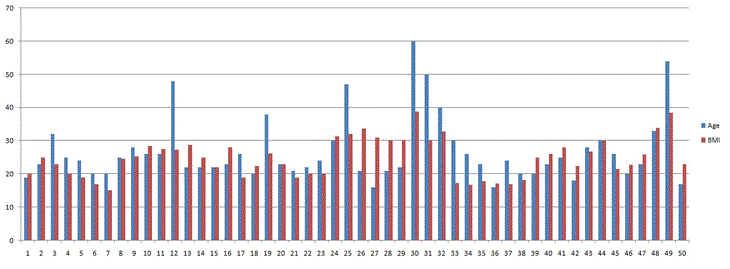 |
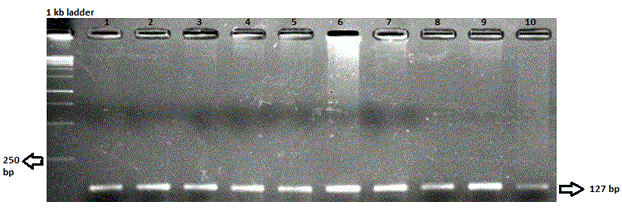 |
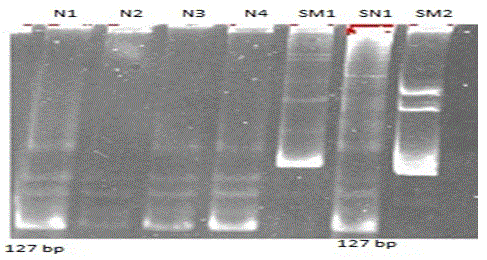 |
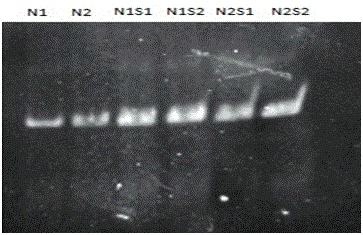 |
| Figure 1 | Figure 2 | Figure 3 | Figure 4 |
 |
 |
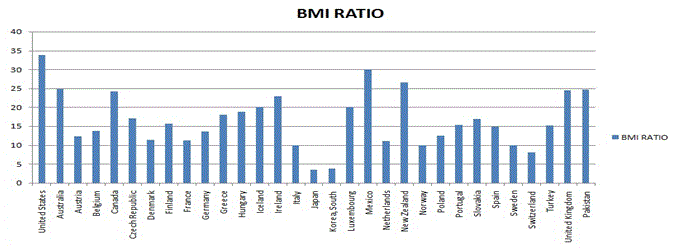 |
| Figure 5 | Figure 6 | Figure 7 |
Relevant Topics
- Android Obesity
- Anti Obesity Medication
- Bariatric Surgery
- Best Ways to Lose Weight
- Body Mass Index (BMI)
- Child Obesity Statistics
- Comorbidities of Obesity
- Diabetes and Obesity
- Diabetic Diet
- Diet
- Etiology of Obesity
- Exogenous Obesity
- Fat Burning Foods
- Gastric By-pass Surgery
- Genetics of Obesity
- Global Obesity Statistics
- Gynoid Obesity
- Junk Food and Childhood Obesity
- Obesity
- Obesity and Cancer
- Obesity and Nutrition
- Obesity and Sleep Apnea
- Obesity Complications
- Obesity in Pregnancy
- Obesity in United States
- Visceral Obesity
- Weight Loss
- Weight Loss Clinics
- Weight Loss Supplements
- Weight Management Programs
Recommended Journals
Article Tools
Article Usage
- Total views: 13454
- [From(publication date):
April-2015 - Apr 03, 2025] - Breakdown by view type
- HTML page views : 8962
- PDF downloads : 4492
